This is Paul Sermon's vision for his new work:
'My work in the field of telematic arts explores the emergence of user-determined narrative between remote participants who are brought together within a shared telepresent environment. Through the use of live chroma-keying and videoconferencing technology these divided audience participants enter a video installation and initially suppose they entering a passive space - sitting, standing or sometimes lying within it. Their presence within the space is recorded live on video camera and mapped in real-time, via a chroma-key video mixer, with an identical camera view of another participant in an identical installation space – combining two shots of live action by replacing a blue or green back drop in one image with the image of the other. The two spaces which can be any geographical distance apart are linked via an videoconference connection, making it possible to link and combine these telematic installations and there performing audiences between almost any location in the world.'
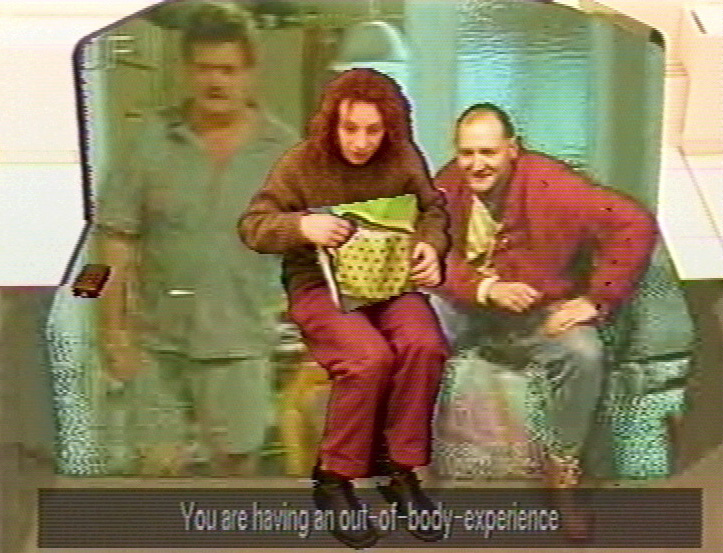
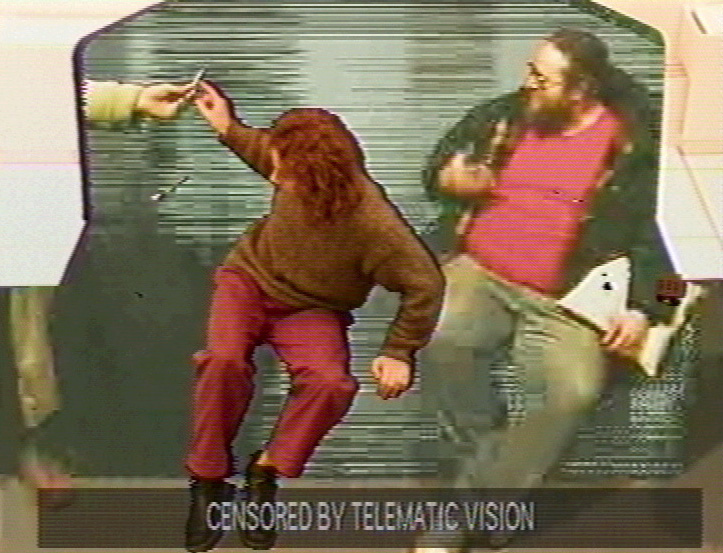
'This is essentially how all my installation projects function, but what is most surprising for the intended viewer is that they form an integral part within these telematic experiments, which simply wouldn’t function without their presence and forced participation within it. The audience participant rapidly becomes a performer, or at best an actor within these spaces, by observing their body within a telepresent space represented on self-view video monitors in front of them. The user/actor ascends a rapid learning curve and begins to control and choreograph their human avatar representation of themselves in a new telematic space, in combination with another physically remote role-playing user. My main intension is to allow my audience to view and experience my work in both a passive and active role – drawing very different experiences and initial conclusions from them. Whilst in the passive viewing mode the audience is observing the public in what often appears to be a well rehearsed piece of drama confidently played out by actors – compelling viewing, but a complex issue to contend with when it is understood the performers are also audience members merely participating in an active role. Once the audience participant enters this space they immediately represent two dynamic performer roles; consciously as the controller, or puppeteer, of their own avatar performer, yet unaware of their secondary performing role to the off camera members of the audience. Who are themselves awaiting the next available slot on the telematic stage - soon to be sharing in this split dynamic. The Narrative that unfolds here would appear to be self determined by the user, on and off camera. But what is essential in such experiments is the architecture of this installation. As an artist I am both designer of the environment and director of the narrative, which I determine through the social and political context that I choose to play out these telepresent encounters in.'
'It is my intension to create a telematic installation that is entirely incorporated within the design of The pUBLIC building walkway. The audience should not even be aware of an artwork in this space until entering the telepresent zone and by simply sitting down at one the interfaces. Only then realising the presence of the art installation by making the invisible visible and becoming an intrinsic viewer/performer within it. It is essential that the design of the seat interfaces are made in collaboration with The pUBLIC and the BKD design team on order to maintain this intension throughout the entire research and development process of the project.'
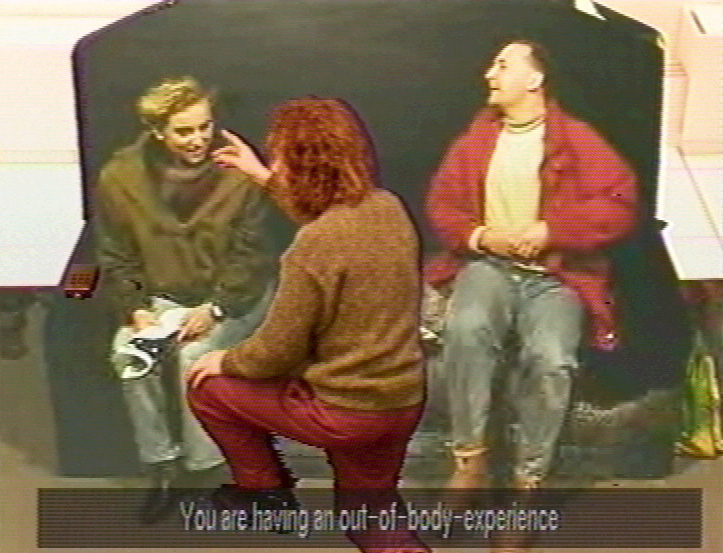
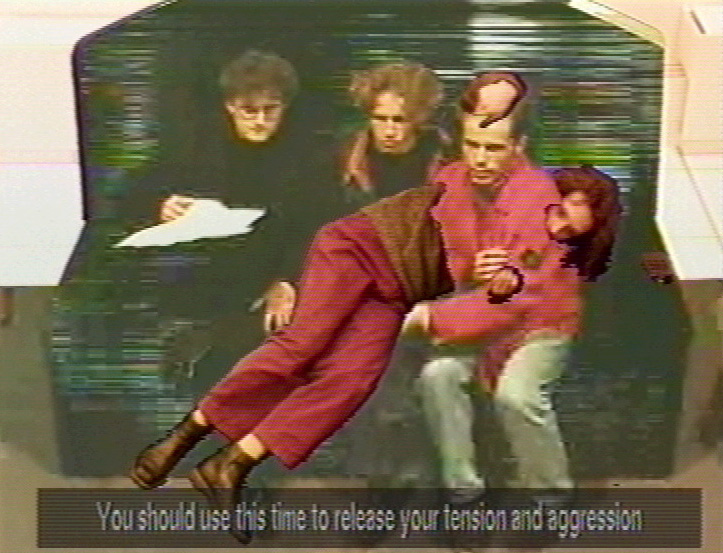
'Telematic Embrace embodies two individual telematic installations that total four interrelated seat interfaces occupying the two 'kidney' shaped waiting areas on The pUBLIC walkway/access route. Technically the two installations function in identical ways, however they offer alternative levels of telepresent dominance in each of the waiting areas that inform the public of differing methods of human interaction in the space.'
'The complete installation consists of four bench type seats – two in each waiting area. One of the seats in each space is covered with a grey 'Chromatte™' fabric that appears blue to a video camera – the other seats are made of corresponding materials to suit its surrounding. A large flat screen video monitor, with a camera attached above it, is positioned in front of each of these four seats. The camera images are paired together and chroma-keyed in the following way: The chromatte seat in area one is chroma-key mixed with the neutral seat in area two - whereby the separate viewers appear to be sitting together on the same telepresent seat, which is displayed on the flat screen monitor in front of them. The user on the chromatte seat in area two is chroma-keyed with the user on the neutral seat in area one and displayed in the same way.'
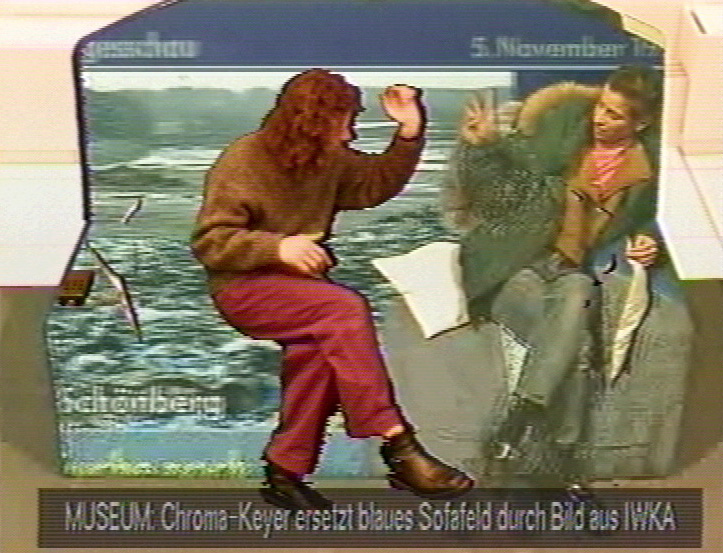
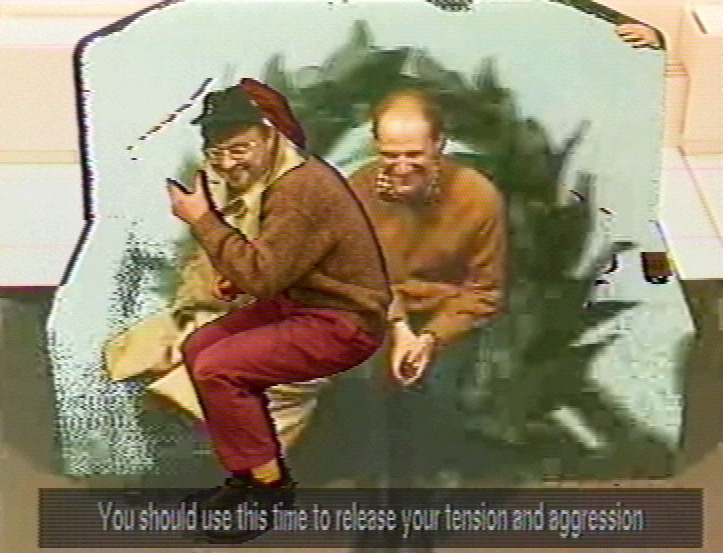
'The viewers now have complete telepresent control of themselves within a shared virtual environment, where an interactive telematic dialogue between the remote participants begins to unfold. Telematic Embrace is a vacant space of potential. Without the presence of person it is nothing more than a normal seating area – that is until the public sit down and create their own telepresent performance by becoming the voyeurs of their own spectacle.'
all statements and images of Telematic Vision [link], which inspires Telematic Embrace, are courtesy of Paul Sermon
